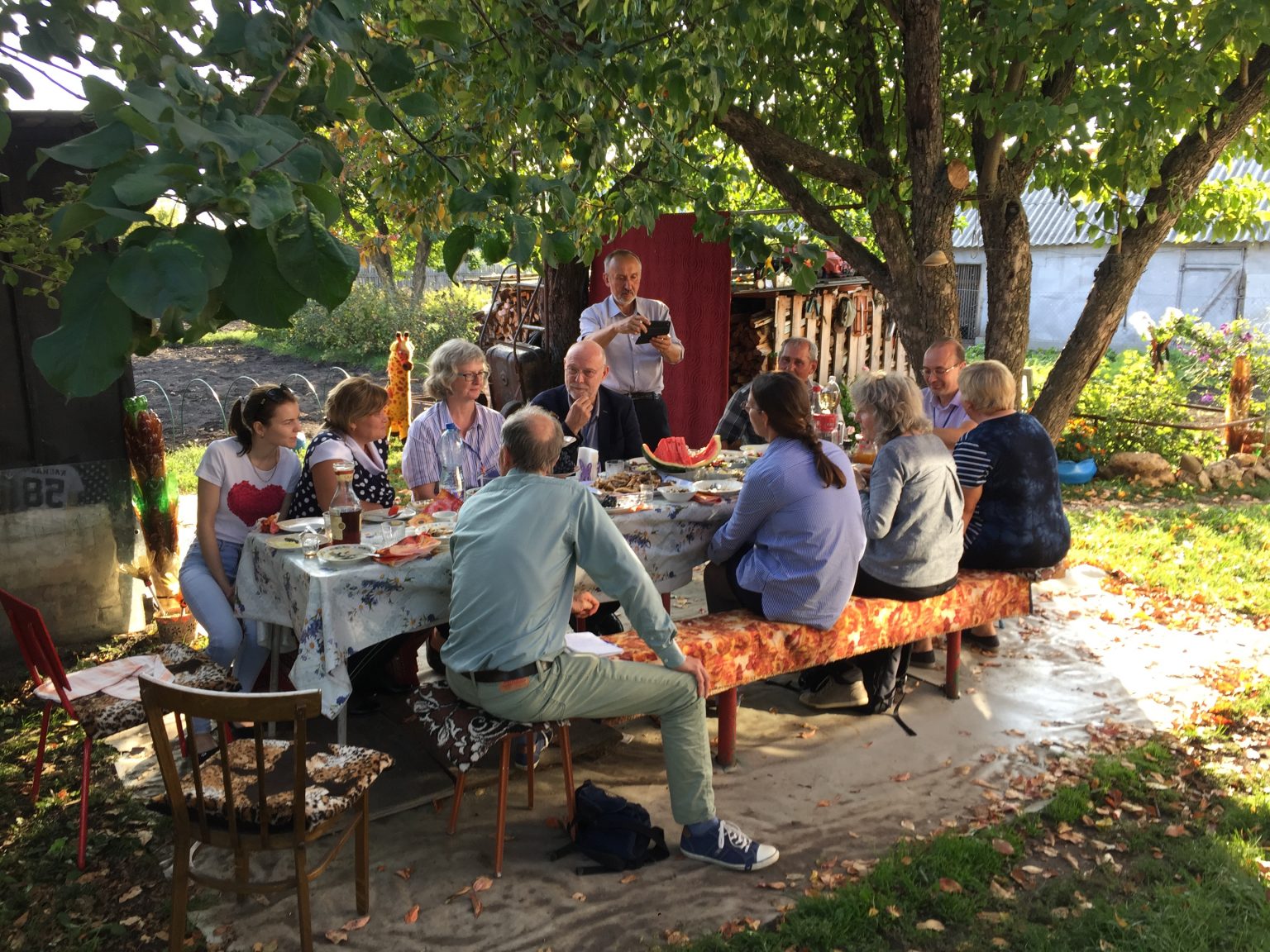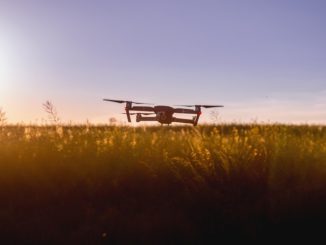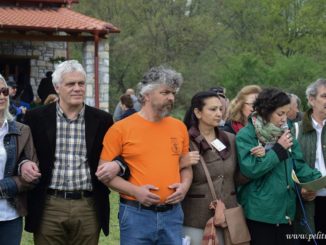 As the CAP ‘Super Trilogue’ gets underway, the Commission’s Long Term Vision for Rural Areas (LTVRA) process culminates in a week-long conference hosted by the European Network for Rural Development. We at ARC are adamant that CAP reform and the Rural Vision process should not have been kept apart. With CAP negotiations still ongoing, the LTVRA and the CAP reform should be linked now, including with distinct CAP measures that reflect the Farm to Fork and the Biodiversity Strategies. Here we present key points that we believe are crucial to the substance and the realisation of the EU’s long-term rural policies.
As the CAP ‘Super Trilogue’ gets underway, the Commission’s Long Term Vision for Rural Areas (LTVRA) process culminates in a week-long conference hosted by the European Network for Rural Development. We at ARC are adamant that CAP reform and the Rural Vision process should not have been kept apart. With CAP negotiations still ongoing, the LTVRA and the CAP reform should be linked now, including with distinct CAP measures that reflect the Farm to Fork and the Biodiversity Strategies. Here we present key points that we believe are crucial to the substance and the realisation of the EU’s long-term rural policies.
For almost a year now the European Commission has been envisioning rural Europe 2040. The Commission’s vision process has included a public consultation and a thematic working group of European Network for Rural Development (ENRD).
Visioning Rural Europe culminates in the Rural Vision Week: Imagining the future of Europe’s rural areas, taking place from 22nd to 26th of March. The event will provide a final opportunity for discussion and exchange to contribute to the preparation of the Long Term Vision for Rural Areas Communication which the Commission is expected to publish this coming April.
As well as engaging in the Commission’s vision process via ENRD’s thematic group, over the last 12 months at ARC2020 we’ve done our best to help mobilise and animate rural stakeholders with events and collaborative documents. You can find resources on building this rural vision on our dedicated page. This includes our Rural Vision and Strategy working document and our event report, as well as an article which highlights stakeholder feedback.
At this final stage of official rural visioning we present key points that we believe are crucial to the substance and the realisation of the EU’s long-term rural policies. The Long Term Vision for Rural Areas (LTVRA) must prioritise: empowerment of local rural communities, rural-urban partnerships, inclusive rural digitalisation and fair digital transition. It must include the ambitions of the European Green Deal as well as the related Biodiversity and Farm to Fork Strategies. And it must strengthen the capacity of rural communities to respond to growing environmental, social and economic challenges.
To pursue these priorities we call for: a clear strategy and related actions framing the next Common Agricultural Policy (CAP) legislation and national Strategic Plans, and promoting decentralised decision-making structures with strong local governance and leadership.
Strategies and Actions – Now!
As stated in our Vision and Strategy for Rural Europe, a long term rural vision must be translated into a well-resourced strategy and set of actions that respond to and reflect the needs of rural (and urban) people as well as the diversity of rural stakeholders and rural-urban relations.
We are not alone in saying this – one of the key points identified in ENRD’s third Thematic Group meeting is that ‘if it is to lead to real change, the LTVRA will need to be translated into some form of strategy and action plan’. ‘In the short run’, ENRD continues, ‘many (participants) argued that this will have to rely on making the most of the EU policy architecture that has been developed for the 2021-2027 programming period. This will then need to be translated into national, regional and even municipal levels’.
The Long-Term Rural Vision and the next CAP – two roads diverged?
There needs to be a procedure whereby the proposals and recommendations emerging from the EU rural vision are translated into guidance, operational principles, incentives, procedures and criteria to steer the Commission and Member States in the joint management of rural policy interventions including through the Common Agricultural Policy (CAP) and the Cohesion Policy.
However, rather than retrospectively making the most of the CAP 2021 – 2027 policy architecture – which is still under negotiation – the LTVRA and the CAP reform should be linked now, including with distinct CAP measures that reflect the Farm to Fork and the Biodiversity Strategies.
CAP Strategic Plans – which are currently being developed by Member States – should integrate objectives of the EU Green Deal’s Farm to Fork and Biodiversity Strategies. But unfortunately, as it stands today there is no binding requirement for them to do so.
We at ARC firmly believe that the CAP trilogues and the rural vision process should not have been kept apart. However, once a CAP legislative framework is agreed upon by legislators, the LTVRA should be taken into account in the negotiations on national Strategic Plans, when Member States make their submissions to the European Commission.
Along with Cohesion Policy, the CAP plays a strategic role in the development of rural areas. As per Matteo Metta and Sebastian Lackner’s report on CAP trilogues and strategic plans: ‘An integrated, multi-sector, territorial long-term vision for rural areas, such as the one being prepared and promoted by the Contact Point of the European Network for Rural Development cannot be seriously implemented if the EU co-legislators are not creating an enabling policy framework now, during the ongoing negotiations of the CAP reform.’
According to the report, ‘the EU co-legislators, with their adopted positions (on the CAP reform), have voted for provisions that bend rural policy to the primary interests of the agricultural sector, instead of integrating it into the wider European cohesion and territorial policies.’
Metta and Lackner propose an amendment to the CAP Strategic Plan Regulation to include ‘more provisions to integrate the rural development interventions with the Common Provision Regulation 2021 – 2027 for the Cohesion Policy, especially in relation to the funds that will increase the digital connectivity coverage and socio-economic infrastructure in rural areas.’
Policy Framework and Empowering Rural Communities

Here at ARC we are adamant that in order for a resilient farming and rural economy to be realised, the future CAP and Rural Policies must create a policy framework which sets verifiable targets for farming and establish more participative and local governance in rural development. The actions receiving financial support should build on the experience of the LEADER Programme and Community Led Local Development (CLLD) and be focused through integrated sub-regional development strategies designed and managed by multi-sectoral territorial partnerships.
Our Vision and Rural Strategy states: “Following the Cork II Declaration, a rural agenda should propose a set of integrated policies which enable and empower rural communities to turn challenges into advantages such as decarbonisation, climate measures, digitalisation, generational change, integration of new entrants, social innovations, etc). The rural agenda should be built upon the success stories of the LEADER and CLLD approach of past decades.”
The European Commission recently published a study on the 2014-2020 CAP’s impact on territorial development of rural areas regarding socioeconomic aspects. It found that certain CAP Pillar 2 measures including the LEADER Programme positively impact balanced territorial development, despite their relatively smaller funding shares.
The study recommends that these measures should receive ‘a higher funding share and more appropriate implementing rules in the next programming period’. In the EU long-term budget already adopted in December 2020, the CAP’s second pillar for 2021-2027 is allocated almost 1.2 billion less than it received for 2014 – 2020. Does that mean we must wait until CAP 2027 for additional earmarking of funds that promote balanced territorial development?
The Commission’s study also recommends that ‘basic payments should be increasingly territorially targeted to regions where farmers’ incomes, in comparison to those of the whole economy, and quality of life lag behind those of farmers in other regions, and within regions. Likewise, basic payments should be more focused on those farm scales and types which suffer from the worst social and economic conditions.’
Currently, investments into rural infrastructure and services disadvantage or exclude smaller scale farming and enterprises and do not allow for diversification of income and realisation of locally and regionally added value. Small scale processing and marketing facilities, local participatory training and research into climate friendly practices along with selection and reproduction of seeds adapted to local and regional soil and climatic conditions are the basis for preserving and extending biodiversity in farming and new forms of cooperation and solidarity between farmers and consumers.
In Sum
Without a doubt the incoming CAP reform will have significant impacts on rural Europe and rural communities in the coming years. This is why a new vision 2040 must find its way into the next CAP legislative framework. 2030 will be the moment of truth for whether Europe’s farming practices and rural policies have contributed to the Paris Agreement and to prevent biodiversity collapse.
The Common Agricultural Policy and the national Strategic plans of the Member States must include the ambitions laid down in the Green Deal and the Biodiversity Strategy, and an ambitious integrated Rural Policy must draw resources and inspiration from all other EU policies and funds to be able to offer the necessary tools, supports and opportunities to meet challenges like climate change and biodiversity loss.
More
A Rural Proofed CAP post 2020? – Analysis of the European Parliament’s Position






1 Trackback / Pingback
Comments are closed.